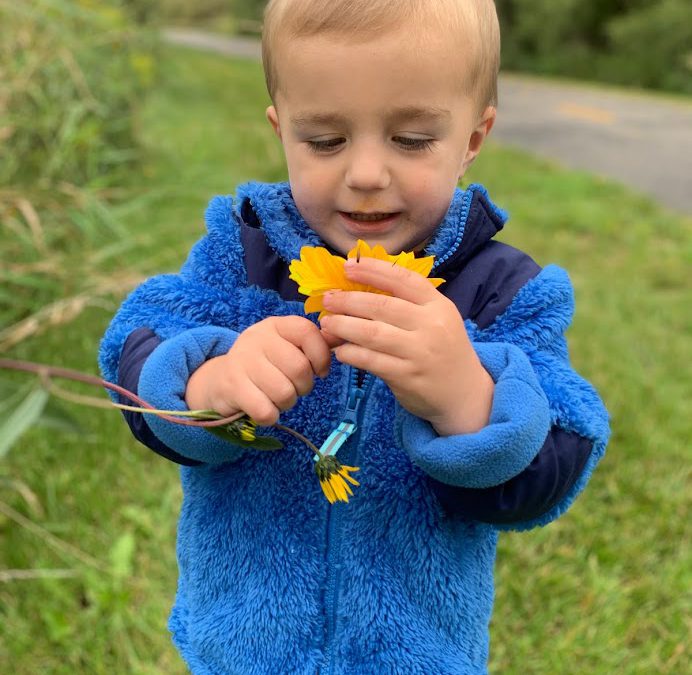
by Molly Jameson | Aug 12, 2021
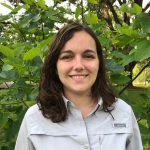
Article by Rachel Mathes, Horticulture Program Assistant with UF/IFAS Extension Leon County.
By Rachel Mathes
My only brother and his family live in Appleton, Wisconsin. Though I’m only able to see my niece and nephews one or two times a year, we have a deep connection through our love of the outdoors.

Zach discovering the joy of nature. Photo by Rachel Mathes.
Their middle son, Zachary, is a budding naturalist at just four years old. When I visit them, Zach, his brother Connor, sister Cecilia, and I, load up the wagon and go for walks on the edge of the prairie in their neighborhood. We start our walks looking for scat and signs of wildlife. Because the kids are so close to the ground, they often spot wildlife trails before I do. We talk about what animals may be there, what they eat, and how we can help them.
After each walk, we wind down at home with an iNaturalist session. Zach and his siblings help me choose what animal or plant we think we saw with the help of the app’s nearby suggestions tool. A favorite game we play after all our photos are entered into the app is a game we’ve coined, “where’s that animal?” We use the iNaturalist explore feature to find sightings of exciting creatures like wolves and beavers near their home. The kids have learned that even scientists often don’t see the animals they study, just signs of them.
At age three, Zach learned to identify milkweed with impressive accuracy. I pointed out the plant on a previous trip more than six months earlier and he remembered how to find them. Common milkweed, Asclepias syriaca, is a large leafed species that prefers winters a bit colder than we get here in the Florida Panhandle, but is native in northern states across the Eastern US, including Wisconsin. Zach is often stopping the wagon to scout for monarch caterpillars, finding even the smallest instars and eggs.

Zach learned to identify common milkweed, Asclepias syriaca, at the age of three. Photo by Rachel Mathes.
When I video call the kids from Florida, Zach is often asking to see my fruit trees, vines, and bushes. He knows that we have very different seasons than Wisconsin when I am eating blueberries in May and he’s still knocking frost off his snow boots. In July, he tells me about the raspberries they find in the woods with their dad. We both get a bit of seasonal berry jealousy. On my last trip we planted thornless blackberries in their garden together. It remains to be seen whether the birds will let the kids have a harvest, but the kids will be excited either way.
Though we may live a thousand miles apart, I know my relationship with my niece and nephews will continue to thrive as they explore the natural world around them. One day, I hope to introduce them to the awe of Florida manatees and alligators. Until then, I will relish the time we get to spend together outdoors in nature and on the phone together. I know that Zachary and his siblings will grow up having respect for the natural world and I hope he always exclaims, “Monarch! Look auntie Rachel, a monarch caterpillar!” on our walks together.
Author: Rachel Mathes, Horticulture Program Assistant with UF/IFAS Extension Leon County.
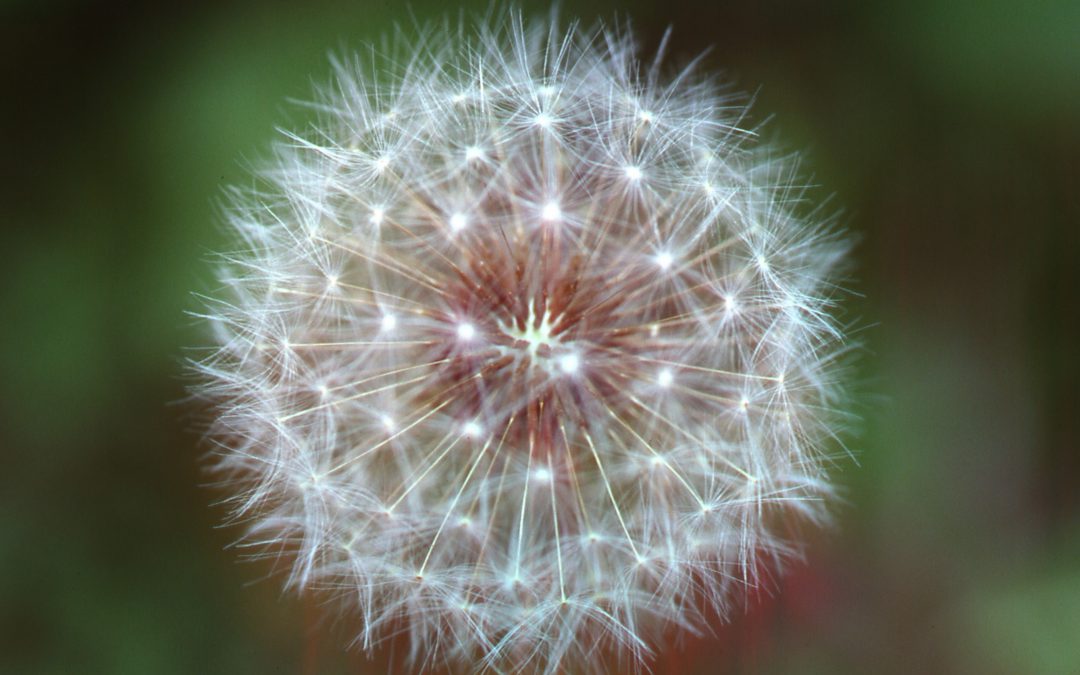
by Molly Jameson | Aug 21, 2020
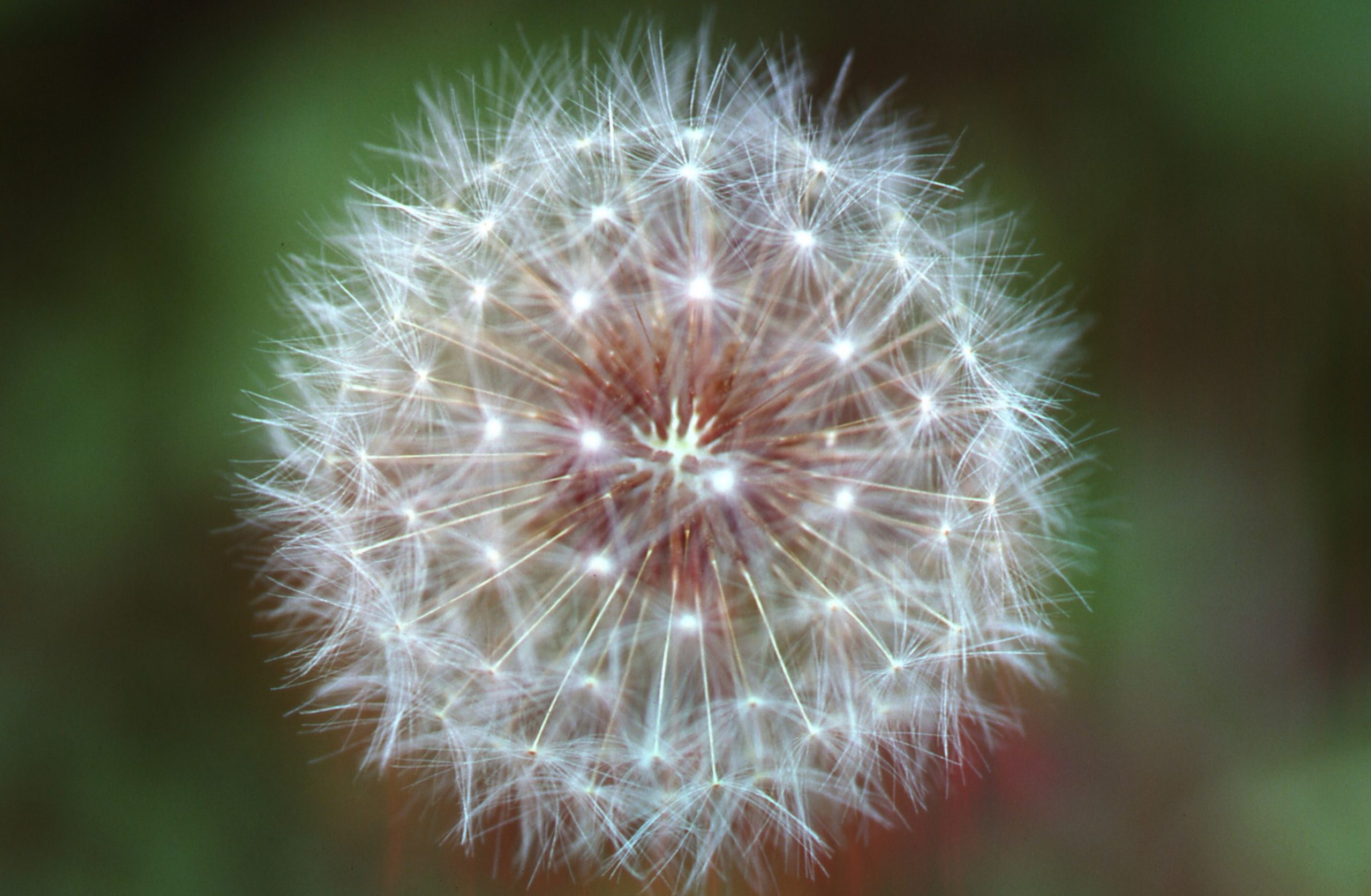
Dandelions form “blow balls” to disperse seeds by wind. Photo by Joseph OBrien, USDA Forest Service, Bugwood.org.
A Second Look at Dandelions
Many of us have memories of spotting a dandelion as a child and immediately gravitating toward it, eager to hold it up by the stem and blow with all our might. If all the puffs of white disappeared, we were sure the dandelion would grant us our wish.
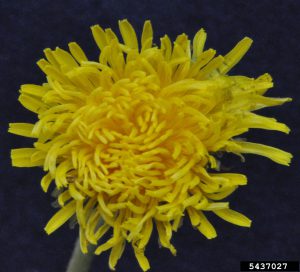
Dandelion flowers, leaves, and roots are all edible and contain many vitamins, minerals, and antioxidants. Photo by Bruce Ackley, The Ohio State University, Bugwood.org.
As an adult, spotting a dandelion may still remind you of the good ole days, but when they begin to encroach upon your lawn or garden, they are likely to be seen less as a friend and more as a foe.
Perhaps the reason they give landscapers headaches is because dandelions thrive in many conditions. They have the ability to grow in the sun and in the shade, and they do well in both disturbed and undisturbed soils. Once more, they thrive in moist environments, and because they are perennials capable of developing long taproots, they also do well in dry environments. A dandelion taproot can grow as deep as three feet in search of water.
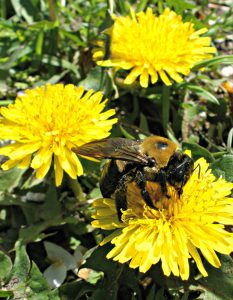
Dandelions are an important early season nectar and pollen source for bees, such as for this carpenter bee. Photo by Ansel Oommen, Bugwood.org.
Although the common dandelion (Taraxacum officinale) is native to Eurasia, it is naturalized to North America and is believed to have arrived with European settlers in the 1600s. At first glance, you may wonder why colonists bothered to transport such a small yellow flower so far. As it turns out, dandelion flowers, leaves, and taproots are all edible, serving as great sources of fiber and vitamins A, C, and K. Additionally, they are a source of antioxidants, such as beta-carotene, and minerals such as iron, calcium, potassium, and magnesium. Coupled with their ability to thrive in many conditions, you can see why dandelions made a great edition to colonial herb gardens.
Since their arrival in North America, dandelions have become an important early season nectar and pollen source for bees, and they help support both the larval and mature stages of some species of butterflies and moths. Additionally, dandelions can be a food source for wildlife, such as white-tailed deer, quail, wild turkeys, and rabbits.
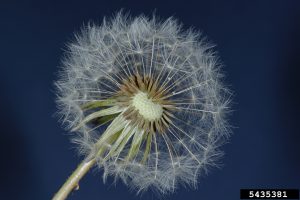
A single dandelion “flower” can have more than 100 florets that each develop into a seed-like fruit that has a parachute-like pappus that can carry the seed up to five miles away. Photo by Joseph Berger, Bugwood.org.
A member of the Aster family, dandelions are related to lettuce, artichokes, and sunflowers. When you look at a dandelion flower, you are actually seeing many, many tiny flowers, called florets. A single dandelion “flower” can have more than 100 florets that open in the morning and typically close at night. After a few days, the florets remain closed and each develops a seed-like fruit atop a hollow flower stalk. As the seeds mature, the flower stalk elongates up to two feet high and a tall standing “blow ball” forms. Each ball is comprised of many seeds, each attached to a tuft of bristles, or pappus, that can use the wind to parachute the seed up to five miles away.
So next time you notice a patch of dandelions standing tall on the landscape, put down your herbicide and take a closer look. Observe the visits from hungry bees and butterflies, perhaps pluck some fresh flower petals to add to your morning pancakes, and then pick out your favorite puff of white and make a wish.
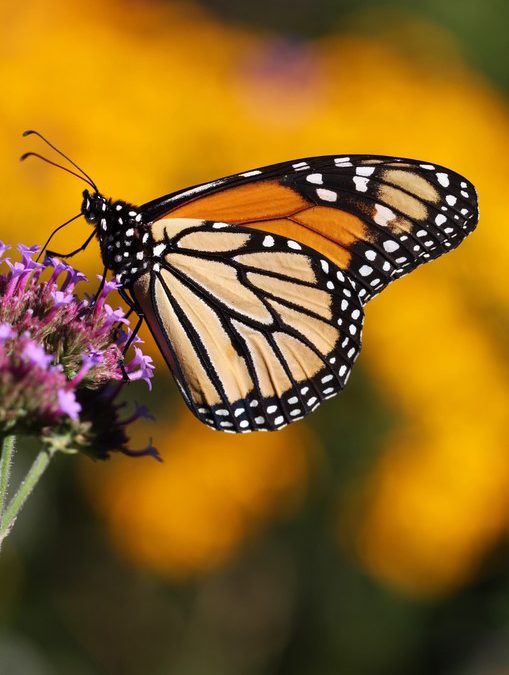
by Molly Jameson | Apr 18, 2019
With spring upon us, the mighty monarch butterflies have begun their long trek to the north from Mexico, looking to time their migration with growth of the milkweed plants in the southeastern United States. Mated monarch females lay hundreds of eggs along their journey, but only two percent of these eggs will survive to become mature caterpillars to carry on the next generation.
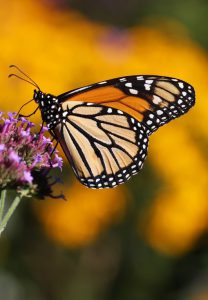
The monarch butterfly.
Photo: Steven Katovich USDA Forest Service
Monarch larvae rely exclusively on milkweed for nutrients, so it is of upmost importance that the plants are available to the offspring at the correct time. If the adult monarchs arrive too early, the milkweeds may not have had enough time to grow after late frosts. If they arrive too late, the milkweed vegetation may not support the nutrient needs of the caterpillars. In addition, the milkweeds contain a poisonous toxin, cardiac glycoside, that stays within the caterpillars’ bodies once consumed. This does not harm the larvae, but actually helps them, as it makes the young and adult butterflies taste terrible and makes them poisonous to potential predators.
For these reasons, it is important that we all do our part to support the growth of native milkweed species. Locally, the Monarch Milkweed Initiate at the St. Marks National Wildlife Refuge educates the public about milkweed and monarchs and grows and transplants native milkweed to support the monarchs on their migration.
When planting milkweed, be aware that there is a popular commercialized non-native tropical milkweed species that is not appropriate for the monarchs in our area. This species, Asclepias curassavica, can flower year-round, luring the monarchs to stay and breed in the winter when they should be on their way back to Mexico to escape freezing temperatures. Staying and breeding too long can make the monarchs susceptible to a protozoan parasite, Ophryocystis elektroscirrha (OE for short), that infects the caterpillars when feeding, reducing their lifespan, body mass, mating success rate, and ability to migrate.
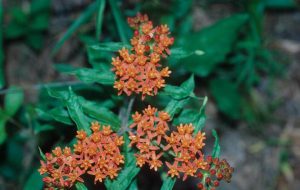
Butterfly milkweed (Asclepias tuberosa)
Photo: John Ruter, University of Georgia
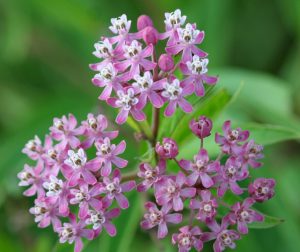
Swamp milkweed (Asclepias incarnata).
Photo: David Cappaert
Luckily, there are about 21 native milkweed species in Florida. Many native milkweeds in the Florida Panhandle require specialized care when grown for transplanting, as different species have adapted to a range of habitats. The Asclepias tuberosa, commonly referred to as butterflyweed, is considered easiest to grow as they transplant well and thrive in full sun. Others, such as Asclepias perennis, or aquatic milkweed, and Asclepias incarnata, swamp milkweed, must be grown using trays without drain holes, as their “feet” must be kept wet. The Asclepias humistrata, or sandhill milkweed, requires a drier, heavier soil.

Monarch catepillar (Danaus plexippus).
Photo: Steven Katovich, USDA Forest Service
To support the monarchs and grow milkweed in your garden, come to the Leon County Extension Office at 615 Paul Russell Road on Saturday, May 11, from 9:00 a.m. to 1:00 p.m. for the Spring Open House and Plant Sale. Master Gardeners have been busy growing native milkweeds for this event and will be on hand selling the transplants. There will also be many other Florida Friendly and native plants available, along with guided garden tours, kids’ activities, the UF/IFAS Bookstore, a silent auction, live music by the Tallahassee Woodwind Quintet, refreshments, and Master Gardeners and Extension Agents on-hand to answer any of your gardening questions.














